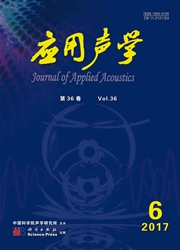

 中文摘要:
中文摘要:
海底粗糙界面是产生混响的主要因素之一。本文通过理论分析和数值仿真的方法,根据浅海全波动混响模型对不同海底粗糙界面所引起浅海混响平均强度特性进行研究,主要考虑Goff-Jordan谱、Gauss谱和指数谱三种不同粗糙界面条件下的海底反向散射强度和混响平均强度特性。计算结果表明:海底粗糙界面会引起海底反向散射强度的频率特性的差异,进而导致海底平均混响强度的频率特性的差异,但随入射角度的变化不大。即使界面起伏的方差和相关长度相同,不同的粗糙度谱也会引起平均混响强度的差异。
 英文摘要:
英文摘要:
The rough bottom interface is one of the main factors which cause reverberation in shallow-water waveguide. The numerical simulations and theoretical analyses of the average reverberation intensity due to interface roughnesses have been performed based on the full wave reverberation theory. The roughness spectrum is used to describe rough bottom-surface. Three common roughness spectrums have been considered in the simulation, which are the Goff-Jordan spectrum, the Exponential spectrum and the Gaussian spectrum. The characteristics of bottom backscattering strength and the average reverberation intensity due to different bottom roughness spectrums have been calculated. The result shows that different bottom rough surfaces can cause the frequency dependency and angular dependency of bottom backscattering strength different. Furthermore, it can cause the frequency dependency of the average reverberation intensity changing. Different roughness spectrums with the same root mean square (RMS) and correlation length can cause the change in the average reverberation intensity.
 同期刊论文项目
同期刊论文项目
 同项目期刊论文
同项目期刊论文
 期刊信息
期刊信息
